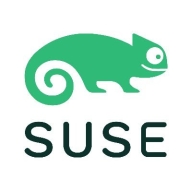

Qualys VMDR and SUSE Rancher compete in IT management, focusing on vulnerability and container management, respectively. Qualys VMDR seems to have the upper hand in straightforward deployment and cost-effectiveness, while SUSE Rancher stands out with its adaptability and multi-cluster management capabilities.
Features: Qualys VMDR includes automated vulnerability assessments, seamless integration with existing security workflows, and a comprehensive vulnerability management solution. SUSE Rancher offers robust multi-cluster management, support for various Kubernetes distributions, and versatility in container orchestration.
Ease of Deployment and Customer Service: Qualys VMDR provides easy cloud-based deployment with ongoing support, facilitating quick integration. SUSE Rancher offers flexible deployment options and benefits from robust community and enterprise support, making it suitable for complex container environments.
Pricing and ROI: Qualys VMDR's pricing is competitive, emphasizing strong ROI through enhanced security management. SUSE Rancher may have higher setup costs but offers significant long-term benefits due to its comprehensive features and scalability.
| Product | Market Share (%) |
|---|---|
| Qualys VMDR | 2.3% |
| SUSE Rancher | 0.4% |
| Other | 97.3% |


| Company Size | Count |
|---|---|
| Small Business | 20 |
| Midsize Enterprise | 12 |
| Large Enterprise | 69 |
Vulnerability Management, Detection, and Response (VMDR) is a cornerstone product of the Qualys TruRisk Platform and a global leader in the enterprise-grade vulnerability management (VM) vendor space. With VMDR, enterprises are empowered with visibility and insight into cyber risk exposure - making it easy to prioritize vulnerabilities, assets, or groups of assets based on business risk. Security teams can take action to mitigate risk, helping the business measure their actual risk exposure over time.
Qualys VMDR offers an all-inclusive risk-based vulnerability management solution to prioritize vulnerabilities and assets based on risk and business criticality. VMDR seamlessly integrates with configuration management databases (CMDB), Qualys Patch Management, Custom Assessment and Remediation (CAR), Qualys TotalCloud and other Qualys and non-Qualys solutions to facilitate vulnerability detection and remediation across the entire enterprise.
With VMDR, users are empowered with actionable risk insights that translate vulnerabilities and exploits into optimized remediation actions based on business impact. Qualys customers can now aggregate and orchestrate data from the Qualys Threat Library, 25+ threat intelligence feeds, and third-party security and IT solutions, empowering organizations to measure, communicate, and eliminate risk across on-premises, hybrid, and cloud environments.
SUSE Rancher manages and deploys Kubernetes clusters, simplifies container orchestration, and enhances DevOps practices, supporting multi-cloud environments and facilitating application scalability and monitoring.
SUSE Rancher provides robust Kubernetes cluster management and seamless integration with different tools and platforms, making it valuable for complex cloud infrastructures. It aids in automating workflows, ensuring consistent application performance across environments, and enhancing security with reliable RBAC. It simplifies operations with automated updates and comprehensive monitoring tools, supporting multiple Kubernetes distributions. SUSE Rancher offers centralized management of clusters with an intuitive experience, though it may benefit from better stability, performance optimizations, and improved documentation clarity.
What are the important features?SUSE Rancher is implemented in various industries where managing Kubernetes clusters and ensuring application scalability are critical. It supports complex cloud infrastructures, automating workflows, and integrating seamlessly with different tools, enhancing overall operational efficiency and security. In industries needing consistent performance and centralized management, SUSE Rancher proves to be an invaluable tool.
We monitor all Container Security reviews to prevent fraudulent reviews and keep review quality high. We do not post reviews by company employees or direct competitors. We validate each review for authenticity via cross-reference with LinkedIn, and personal follow-up with the reviewer when necessary.